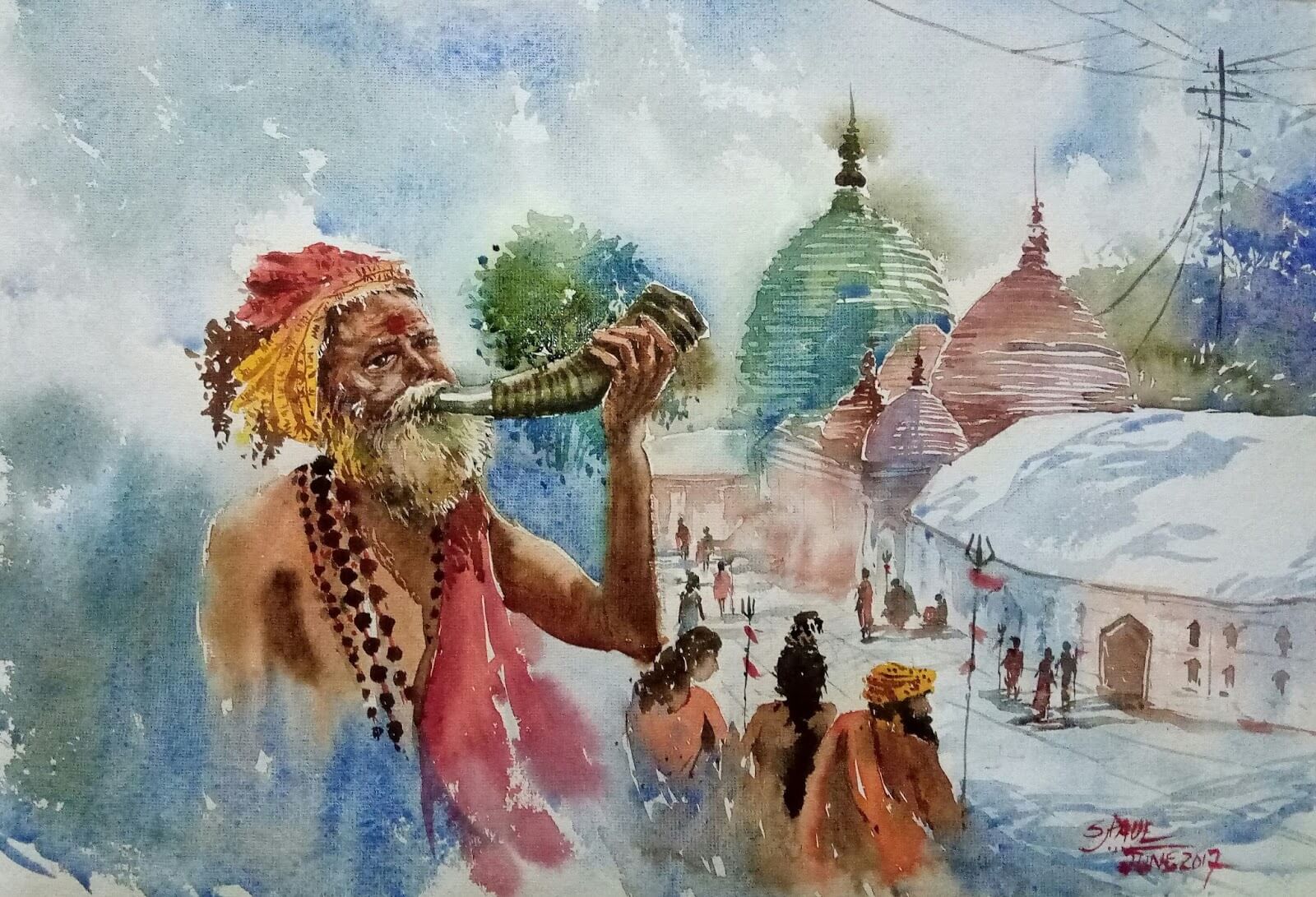Ambubachi Mela: The Menstruating Devi of Assam
Ambubachi, meaning “spoken of water”, locally called “Amoti”, is the annual festival of Assam, one of the northeastern states in India. Situated in the Nilachal hills, it is said to be one of the 108 Shakti peeths of India.
In a country where menstruation is talked about in hushed tones, this festival is one of the biggest congregations in Eastern India, celebrating the menstruating goddess or Devi, Kamakhya. This festival is celebrated in the monsoon month of June, or from the seventh to the tenth days of the Hindu month “Asadh”, during which the Devi is said to be having her annual menstruation cycle and the temples are closed to all devotees. On the twelfth day, everything is washed, and a huge celebration and a fair commences on the temple grounds.
History and Significance
How did such a temple get birthed into existence? Well, it is believed that Goddess Sati leapt into the holy fire or yagna, being conducted by her father Daksha, because he insulted her husband God Shiva. Shiva, heartbroken, performed the destructive dance of tandava, destroying everything while holding onto the corpse of Sati. Before his dance ruined the entire world, God Narayana intervened and cut up the body of Sati into 51 parts. The Kamakhya temple is said to symbolise the genitals and womb of the Mother Goddess, which explains the unique yoni-shaped stone, which is covered with red cloth, to depict the blood of the Devi.
The temple is one of the oldest in the country and hence has witnessed the rise and fall of dynasties in India. It has been destroyed and reconstructed several times, and amidst all, it has stood by to symbolise the rainy season, blessing the soil with fertility and growth.
Celebration of womanhood or Irony?
During the Ambubachi, food is not cooked by the Brahmacharis, Brahmins and widows, who observe a strict diet of fruits. Nothing is washed, and the garbhagriah or sanctum-sanctorum is closed for devotees, to give the Goddess rest. The only ones who avoided the temple were the descendants of the medieval royal Koch family, who built the Kamahaya Temple in 1565, because the goddess was believed to have cursed him, secretly watching the Devi dance.
During the three days, when the Devi is said to menstruate, it is believed that Mother Earth is unclean. Hence, nothing is sown or planted in the soil, and nothing is washed.
While the rituals and untouchability of food and things do raise our eyebrows, it is also one of the only festivals to celebrate menstruation as a symbol of rebirth and creation.

CONCLUSION
This festival highlights the cultural and social ties India shares with the Devi and serves as a powerful platform for challenging taboos surrounding menstruation. In a society where menstruation is often whispered about in secrecy, the Ambubachi festival brings it into the open, celebrating it as a natural and divine process.
Even today, menstruation is something seen as a “necessary evil”, where women are not even allowed to touch anything, or even sleep on the bed, seeing it as “unclean” and “impure”. So, an entire ritual celebrating the wonder of the womb and its natural cycle helps at least a smidgen, to relieve some of the taboo of periods, to bring it from something mythical to something responsible for life and death.
Ultimately, the Ambubachi festival of Kamakhya Temple serves as a reminder of womanhood’s inherent power and beauty. It embraces the menstrual cycle as a symbol of renewal, creation, and the eternal rhythm of life. By acknowledging and honouring Devi’s menstruation, the festival inspires a shift in societal attitudes towards periods, promoting acceptance, understanding, and empowerment for women across India and beyond.
Author




